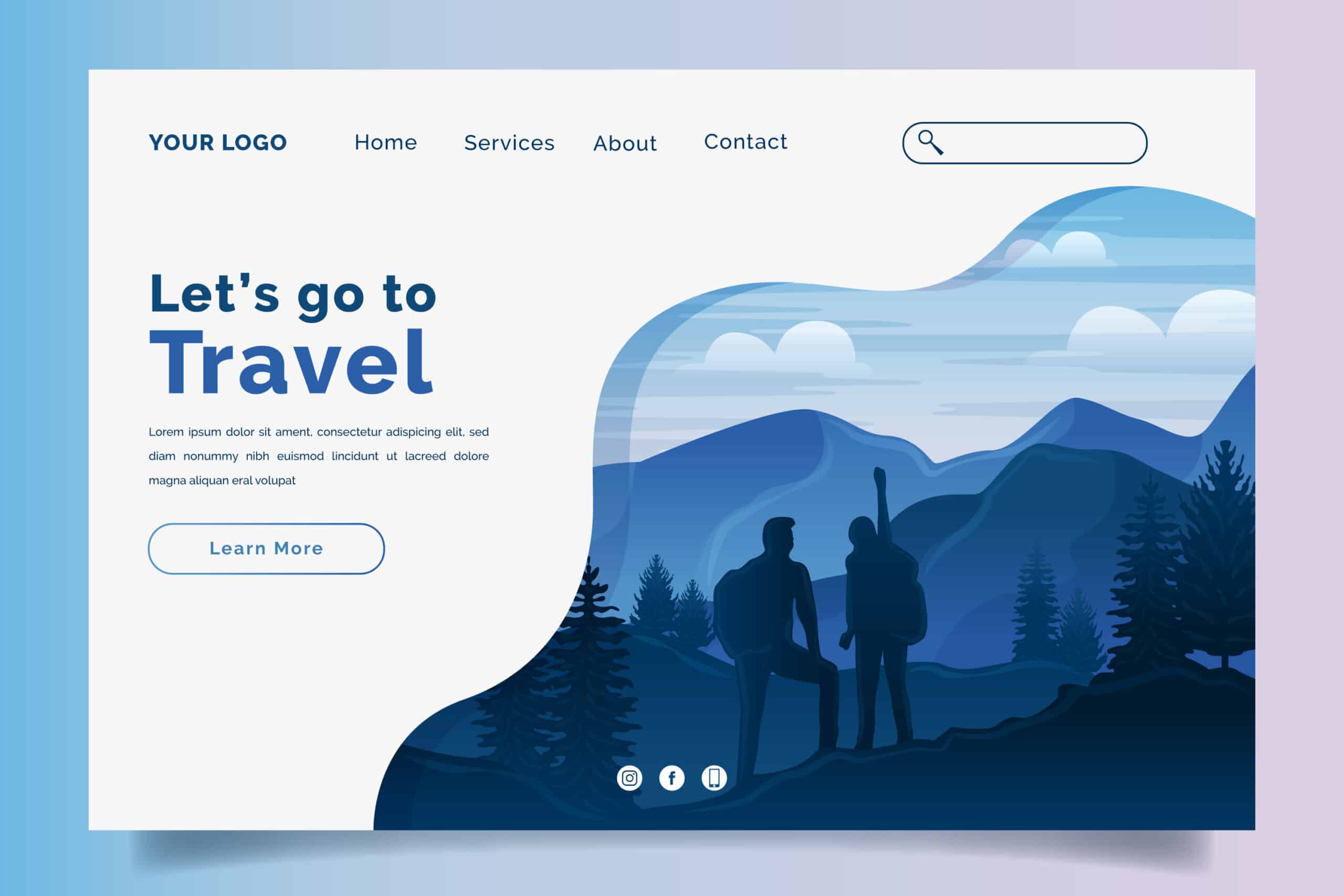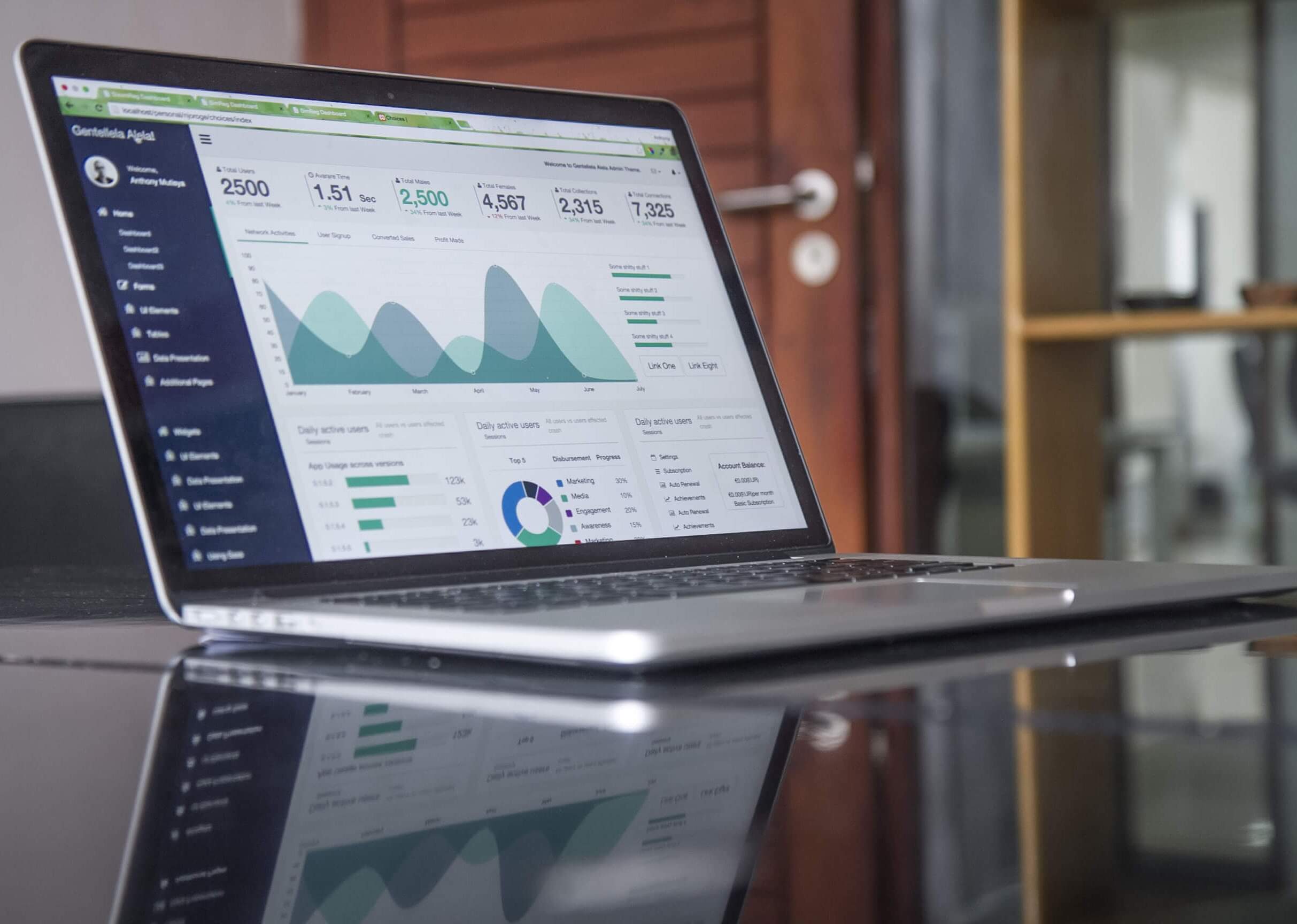Building a perfect landing page is an essential component of any successful digital marketing campaign. It is a page that visitors land on after clicking a link, usually from an advertisement, social media post, or search engine result. The primary goal of a landing page is to convert visitors into customers by encouraging them to take a specific action, such as filling out a form, making a purchase, or subscribing to a newsletter.
What is a Landing Page?
A landing page is a standalone web page that is specifically designed to convert visitors into leads or customers by encouraging them to take a specific action. Most commonly, landing pages are used to get users to fill out a form or to sell a product.
So, why not just have these things on your home page?
The purpose of a landing page is to provide visitors with relevant information about a particular product, service, or offer, and persuade them to take action, such as filling out a form, making a purchase, or subscribing to a newsletter.
Landing pages are typically designed to be highly targeted and focused on a specific audience, product, or offer, and are optimized to drive conversions.
Landing pages often contain a clear headline and subheading that conveys the value proposition of the product or service, along with a call-to-action (CTA) that encourages visitors to take action.
The page may also contain additional information about the product or service, such as features and benefits, customer testimonials, and social proof.
A well-designed landing page can help businesses to improve their conversion rates and achieve their marketing goals.
By providing a clear and focused message and encouraging visitors to take action, businesses can generate more leads and sales, and ultimately improve their ROI on digital marketing campaigns.
Landing Page Best Practices
- Have a clear and concise headline
- Choose an image that illustrates the offer
- Keep the page focused
- Write compelling copy
- Make the CTA prominent
- Use strong visuals
- Use social proof
- Remove all navigation
- Make your page responsive
By following these best practices, you can create a landing page that is highly effective at converting visitors into customers or leads.
Have a Clear and Concise Headline
Having a clear and concise headline for your landing page is crucial because it’s the first thing visitors will see. It needs to immediately communicate the value proposition of your offer.
A good headline should be clear, concise, and attention-grabbing, and should clearly state what the offer is and what benefit the visitor will receive by taking action.
A confusing or vague headline can cause visitors to lose interest and leave the page before they even have a chance to learn more about your offer.
A clear and concise headline sets the tone for the rest of the landing page and can help increase the chances of visitors taking the desired action, whether that’s filling out a form, making a purchase, or subscribing to a newsletter.
Choose an Image that Illustrates the Offer
Choosing an image that effectively illustrates the offer on your landing page can have a significant impact on the success of your page.
Images are a powerful way to convey information quickly and can help to grab the attention of visitors and communicate the value of your offer in a visual way.
When choosing an image, it’s important to select one that is relevant to your offer and helps to reinforce the message you’re trying to convey. The image should be high-quality, visually appealing, and ideally feature people or objects that visitors can relate to.
In addition, you should avoid using stock photos that feel impersonal or generic, as these can detract from the credibility of your offer.
By selecting an image that effectively illustrates your offer, you can help to create a more engaging and compelling landing page that encourages visitors to take action.
Keep the Page Focused
Keeping a landing page focused is crucial to its success because it helps visitors to stay on track and take the desired action. A focused landing page should have a single objective or goal, such as encouraging visitors to fill out a form or make a purchase.
By limiting the number of distractions on the page, such as additional links or calls-to-action, you can help visitors to stay focused on the main offer and avoid getting sidetracked.
Additionally, a focused landing page can help to reinforce the message you’re trying to convey and make it more memorable to visitors. When creating a landing page, it’s important to consider what you want the visitor to do and design the page around that goal.
By keeping the landing page focused, you can increase the chances of visitors taking the desired action and achieve better results from your digital marketing campaigns.
Write Compelling Copy
Writing compelling copy for landing pages is essential to capturing the interest of visitors and convincing them to act.
The copy on a landing page should be clear, concise, and focused on the benefits of the offer. It should also be written in a way that resonates with the target audience and speaks directly to their needs and desires.
To write effective copy, it’s important to identify the unique selling proposition of your offer and use this as the basis for your messaging. Additionally, you should use strong verbs and action-oriented language to encourage visitors to take action and create a sense of urgency by using phrases such as “limited time offer” or “act now”.
Finally, it’s important to break up the copy into small, easily digestible chunks to improve readability and make the message more impactful. By writing compelling copy, you can create a landing page that engages visitors, builds trust, and encourages them to take action.
Make the CTA Prominent
Making the call-to-action (CTA) prominent on landing pages is crucial to encouraging visitors to act. The CTA is the element that tells visitors what action they should take next, such as filling out a form, making a purchase, or signing up for a newsletter.
To make the CTA prominent, it should be placed in a highly visible location on the page, such as at the top or bottom of the page or in a sidebar. The button or link used for the CTA should also be visually distinct from the other elements on the page, using a different color, shape, or font to make it stand out.
Additionally, the language used for the CTA should be clear, concise, and action-oriented, using phrases such as “Get started now” or “Sign up today”.
By making the CTA prominent, you can help visitors to easily identify what action they should take next and increase the chances of them converting into customers or leads.
Use Strong Visuals
Using strong visuals on a landing page can help to grab the attention of visitors and reinforce the message you’re trying to convey. Visual elements such as images, videos, and infographics can help to break up the text on the page and make it more engaging and memorable.
When selecting visuals for a landing page, it’s important to choose high-quality images or videos that are relevant to the offer and help to create an emotional connection with visitors.
Additionally, the visuals should be used strategically to guide the visitor’s attention and encourage them to take action. For example, you might use an image of a happy customer using your product to reinforce the benefits of the offer, or a video that demonstrates how the product works.
By using strong visuals, you can create a landing page that is not only visually appealing, but also more persuasive and effective at converting visitors into customers or leads.
Use Social Proof
Using social proof on landing pages can help to build trust and credibility with visitors, making them more likely to take action. Social proof refers to the concept that people are more likely to believe and trust the opinions and actions of others, particularly those who are similar to themselves.
Examples of social proof that can be used on landing pages include customer reviews, ratings, testimonials, and case studies. By including social proof on your landing page, you can show visitors that other people have had a positive experience with your product or service, and that they can trust your brand.
Additionally, social proof can help to address any objections or concerns that visitors might have, such as the fear of making a bad purchase.
When using social proof, it’s important to use authentic and credible sources, and to present the information in a way that is easy to read and understand. By using social proof effectively, you can create a landing page that is more persuasive and effective at converting visitors into customers or leads.
Remove all Navigation
Removing navigation from landing pages is a common best practice that can help to improve the effectiveness of the page. Navigation refers to the links and menus that allow visitors to move around a website.
By removing navigation from the landing page, you can limit the number of distractions and focus the visitor’s attention on the offer or CTA. This can help to reduce the likelihood of visitors getting sidetracked and leaving the page without taking the desired action.
Additionally, removing navigation can help to create a sense of urgency and exclusivity, as visitors are presented with a limited set of options and encouraged to take action before it’s too late.
When removing navigation, it’s important to ensure that visitors still have a clear way to exit the page or access other areas of the website if they choose to do so. By removing navigation from the landing page, you can create a more focused and persuasive experience for visitors, improving the chances of converting them into customers or leads.
Make Your Page Responsive
Making your landing page responsive is crucial in today’s mobile-first world. Responsive design means that the page is optimized to display properly on a range of devices, including desktops, laptops, tablets, and smartphones.
With more and more people accessing the internet on mobile devices, it’s important to ensure that your landing page is accessible and easy to use on all devices.
A responsive landing page should be designed with a mobile-first approach, taking into account the smaller screen size and touch-based navigation. This might involve using larger fonts, simplified layouts, and fewer elements to ensure that the page is easy to read and navigate on a small screen.
Additionally, a responsive landing page should load quickly, as mobile users may have slower internet connections.
By making your landing page responsive, you can ensure that visitors have a positive experience regardless of the device they’re using, improving the chances of converting them into customers or leads.
How to Design Your Landing Page
Designing a landing page can be a crucial step in creating a successful online business or campaign. To design an effective landing page, it’s important to have a clear understanding of your target audience, their needs and interests, and what you want them to do on your page.
Begin by outlining the main objective of your landing page and creating a visually appealing design that is consistent with your brand’s overall aesthetic.
Keep the layout simple and easy to navigate, with a clear call-to-action that is prominently displayed. Use compelling and concise copy that highlights the benefits of your product or service and include high-quality images or videos that showcase your offering.
Elements of a Good Landing Page:
- Clear and concise headline
- Engaging visuals
- High-quality copy
- Prominent CTA
- Social proof
- Visually appealing design
- Optimized for mobile devices
Clear and Concise Headline
The headline is one of the most important elements of a landing page because it is the first thing that users will see when they arrive on your page.
A clear and concise headline that communicates the main benefit or value proposition of your offering can help to grab the user’s attention and encourage them to stay on your page and learn more.
A good headline should be short and to the point, using simple language that is easy to understand. It should also be relevant to your target audience and convey a sense of urgency or excitement to encourage users to take action.
By using a clear and concise headline, you can create a strong first impression that sets the tone for the rest of your landing page and helps to drive conversions.
Engaging Visuals
Using engaging visuals such as high-quality images or videos on a landing page can be a powerful way to capture the user’s attention and create an emotional connection with your audience.
High-quality visuals can help to showcase your product or service in a visually appealing and memorable way, making it easier for users to understand the value that you offer.
Visuals can also be used to break up the text and make the page easier to scan, improving the overall user experience.
When selecting visuals for your landing page, it’s important to choose images or videos that are relevant to your offering and that resonate with your target audience.
By using engaging visuals that complement your copy and design, you can create a more compelling and persuasive landing page that drives conversions and helps to achieve your business objectives.
High-Quality Copy
Using high-quality copy on a landing page is crucial because it plays a key role in communicating the benefits and value of your product or service to your target audience.
Well-crafted copy can help to establish credibility, build trust, and persuade users to take the desired action.
When writing copy for your landing page, it’s important to keep it clear, concise, and easy to read. Use simple language that is easy to understand and avoid using technical jargon or industry-specific terms that may confuse users.
Highlight the main benefits of your offering and use compelling language that speaks directly to your target audience.
Use bullet points and subheadings to break up the text and make it easier to scan, and consider using social proof such as customer testimonials or case studies to add credibility and build trust.
By using high-quality copy that is relevant and persuasive, you can create a more effective landing page that drives conversions and helps to achieve your business goals.
Prominent CTA
Using a prominent call-to-action (CTA) on a landing page is critical because it directs users to take the desired action and helps to drive conversions.
A good CTA should be prominently displayed on the page, using contrasting colors and clear, concise language that tells users what to do next.
The CTA should be relevant to the offering and communicate the value that users will receive by taking the desired action.
Examples of CTAs include “Sign up now,” “Download our free guide,” or “Get started today.”
It’s important to place the CTA in a prominent location on the page, such as above the fold or at the end of the page, and to use a strong visual element, such as a button, to draw attention to it.
By using a prominent CTA, you can encourage users to take the desired action and increase the effectiveness of your landing page in achieving your business objectives.
Social Proof
Using social proof on landing pages is an effective way to establish credibility, build trust, and persuade users to take action.
Social proof refers to evidence that other people have used and benefited from your product or service, such as customer testimonials, ratings, and reviews.
By incorporating social proof into your landing page design, you can help to overcome any objections or concerns that users may have and convince them to take the desired action.
Social proof can also help to create a sense of community and belonging, making users feel more connected to your brand and more likely to become loyal customers.
When using social proof on your landing page, it’s important to use real and verifiable testimonials and reviews, and to showcase them prominently on the page.
You can also consider using other forms of social proof, such as the number of users or customers you have served, awards or recognition that your brand has received, or partnerships or collaborations with other reputable brands.
By using social proof on your landing page, you can create a more effective and persuasive page that drives conversions and helps to achieve your business objectives.
Visually Appealing Design
Using visually appealing design on landing pages is important because it helps to create a positive user experience and makes your offering more attractive and memorable.
A well-designed landing page should be visually balanced, using a color scheme and typography that is consistent with your brand and easy on the eyes.
It should also be easy to navigate, with clear and concise content that is easy to read and scan. Using white space, images, and other visual elements can help to break up the text and make the page more visually interesting and engaging.
A visually appealing design can also help to establish trust and credibility with your target audience, making them more likely to engage with your brand and take the desired action.
When designing your landing page, it’s important to keep in mind the user’s journey and the desired outcome, and to use design elements strategically to guide users towards the CTA.
By using a visually appealing design that is both attractive and functional, you can create a more effective landing page that drives conversions and helps to achieve your business objectives.
Optimized for Mobile Devices
Optimizing landing pages for mobile devices is critical because a growing number of users access websites and landing pages on their smartphones and tablets.
A mobile-responsive landing page design ensures that the page layout, content, and visuals adjust dynamically to fit the smaller screen size of a mobile device, creating a positive user experience and reducing bounce rates.
To optimize your landing page for mobile devices, you should consider factors such as page load speed, font size, and touch-friendly buttons.
Users tend to have less patience for slow-loading pages on mobile devices, so it’s important to keep the page size and image quality as small as possible without sacrificing visual appeal.
The font size should be large enough to be easily readable on a smaller screen, and touch-friendly buttons should be large enough and spaced out adequately to avoid accidental clicks.
By optimizing your landing page for mobile devices, you can create a more user-friendly experience that maximizes engagement and conversions across all devices.
Tips for Writing Landing Page Copy
Having high-quality copy on landing pages is crucial for any online marketing campaign. A landing page is often the first point of contact with potential customers, and it needs to make a good first impression.
High-quality copy that effectively communicates the benefits of your product or service, highlights social proof, and includes a strong call-to-action can help build trust and credibility with your target audience.
It can also help improve your conversion rates and ultimately lead to more sales and revenue. Therefore, investing time and effort into creating high-quality copy for landing pages is essential for the success of your online marketing efforts.
Here are some tips for writing high quality copy for your landing pages:
- Before writing any copy, it’s important to know who your target audience is. This will help you tailor your message to their needs and interests.
- Your headline should be attention-grabbing and communicate the main benefit of your product or service.
- Avoid using industry jargon or technical terms that your audience may not understand. Keep your message simple and easy to understand.
- Focus on the benefits of your product or service, not just the features. Visitors want to know how your product or service can solve their problems or improve their lives.
- Including testimonials, reviews, and case studies can help build trust and credibility with your audience.
- Make it clear what action you want visitors to take and use action-oriented language to encourage them to do so.
- Use high-quality images or videos and make sure the design of your landing page is clean and easy to navigate.
- Continuously test different versions of your landing page copy to see what works best and make changes based on your metrics.
Combating Bounce Rates
Bounce rate refers to the percentage of website visitors who leave a site after viewing only one page, without interacting further with the site. High bounce rates can be a problem for website owners, as they indicate that visitors are not finding what they are looking for or are not engaging with the site.
When visitors land on a good landing page, they are more likely to stay and engage with the site. This reduces bounce rates and increases the chances of converting visitors into leads or customers. A good landing page can also improve the overall user experience on the website, which can lead to higher engagement and increased loyalty.
In conclusion, having a good landing page is crucial for reducing bounce rates and improving conversion rates. A good landing page should have a clear and concise message, a strong headline, a visually appealing design, a strong CTA, and relevant content. By implementing these elements, you can create a landing page that captures the visitor’s attention and keeps them engaged.
The author generated this text in part with GPT-3, OpenAI’s large-scale language-generation model. Upon generating draft language, the author reviewed, edited, and revised the language to their own liking and takes ultimate responsibility for the content of this publication.






